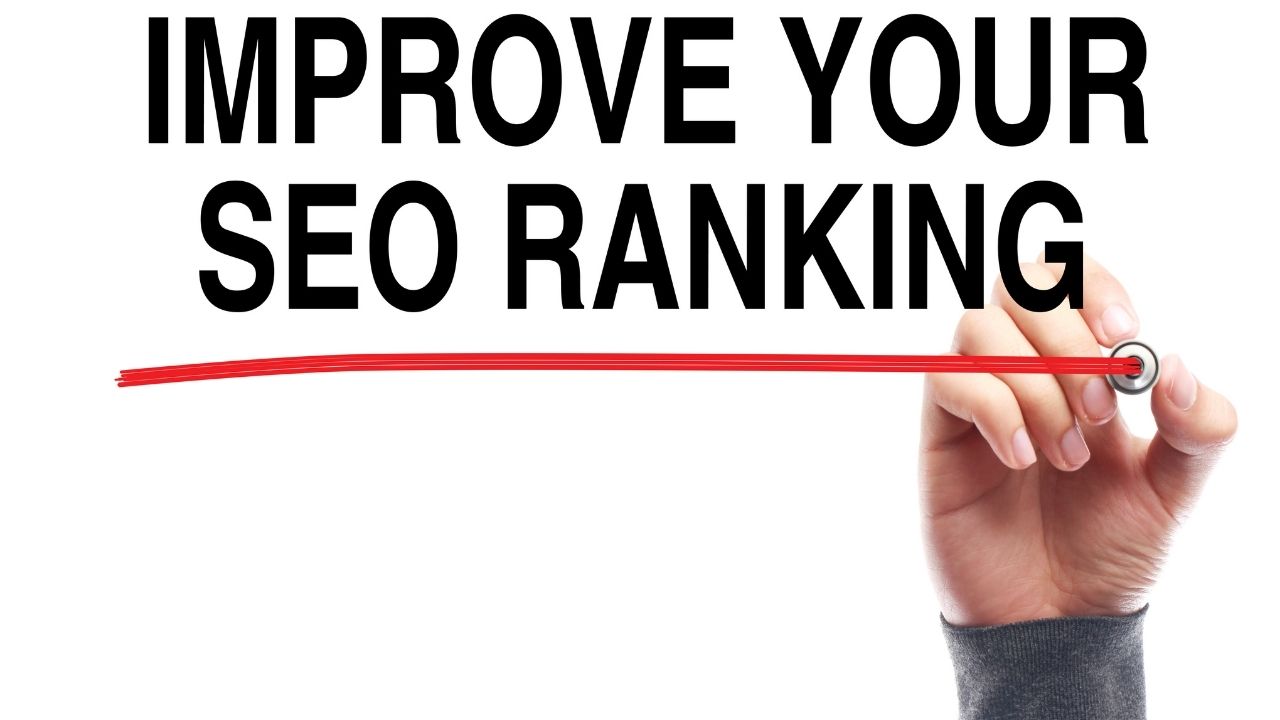
This article will show you how to write SEO content. How to outline your article and research your keywords. Also, how to incorporate secondary keywords. Be sure to include transition words. Once you have your content ready to go, it is time to optimize it so it can be found on search engines. Read on for some great tips! These are some key tips to make sure your article is more search engine-friendly.
Your content should be outlined
A good strategy is to outline your SEO content in order to make sure that it is search engine-friendly. There are many ways to structure your outline. The C.R.A.A.A.P. method is the best. It is easy to establish a base point by using the C.R.A.A.P. These are just a few examples of how to structure an outline.
An outline will help you define thin sections and determine if it is necessary. You can use it to decide whether to merge multiple topics or if you should nest specific sections. It can also help you determine what your target audience is looking for, since keyword placement is only one factor that should be considered. A great outline will cover all of the elements required to write a blog post. Here are a few advantages to outlining your SEO content:
You will need to make a brief outline about the content you are going to create. This outline should include your primary keyword, as well as a list related terms. Your target audience, word count, as well as audience should be considered. You should include any core questions you want to answer, call of action, and suggested meta description. You should also outline your subheadings. Using a content outline helps you achieve cohesion in your content and make the most of your writing time.
A purpose should be the focus of your blog posts. Avoid using cliches or cliches. Engaging and relevant content should be included in your blog posts. In the introduction, include your target audience. This will make your audience more interested in the content. It will also make it easier for them to read. It's important to plan your SEO content in advance so you can start writing. It can even help you write better blog posts.
Find your keywords
There are several steps that you can follow to research your keywords. First, you need to know which keywords are most relevant. Although you may feel that your articles are not relevant to the topic, Google Trends and AdWords can help you find the most searched keywords in your niche. Once you have identified which keywords are most popular, you can begin to plan how to make your content fit that strategy.

Remember that keyword research does not involve tricking Google. It is about determining what your audience wants to read. Understanding how your audience searches will help you create content they will love to read. The keyword "Thailand Travel Guide" could refer to either a blog post about Thailand or a human travel book. You will get high rankings if your content meets the needs and desires of your target audience.
After you have identified the keywords that you wish to target, it is time to do some research. Google searches for the keywords you are interested in and what comes up in the SERP. To determine which websites are more appealing to your target audience, compare your competitors with theirs. Consider the user intent. Does the keyword suggest that users are searching Thailand travel guides? If so, it would be better to write about a specific location.
Also, it is important to look at the monthly search volume associated with your target keywords. You can analyze the MSV of your selected keywords to find out how many times they appear first in the SERP. This information will allow you to target more keywords in your SEO content. Once you've created a list, you can start writing articles or blog posts about each keyword. It is important to review all content and look for keyword cannibalization.
Secondary keywords should be included
It is smart to use secondary keywords in your SEO content for a number of reasons. The first is that it improves the content quality and appeals to your readers. You can avoid writing articles that only focus on your primary keyword. It is unlikely that it will match the readers' intentions. Your content will better reflect what your audience is searching for and your tone will be natural.
SEO success is dependent on the use of the correct keywords in your content. It will allow your readers to easily navigate your articles and increase their chances being found in search engines. Your primary keywords should be used in the title of your article, the metatag description and the first paragraph. They should have a density between three and five percent. Secondary keywords may be used in one or two instances within your content. This is a great way to increase your content's visibility on search engines.
If used correctly, secondary keywords can help you rank higher in SEO. Make sure your secondary keywords fulfill the intent of the primary keyword. They can be used to generate more content ideas such as articles about easy chocolate cake recipes. Review the list before starting to write a section. This is the best way to include secondary keywords. Avoid repetitive writing, and only use synonyms when you absolutely need them. To refresh your content, make sure you use an LSI keyword listing.
Google's Autocomplete feature is another way to add secondary keywords to your SEO content. This feature allows users the ability to search for keywords that other people are searching for, and then drop down the list of terms. These phrases are not random. They are real searches that people are doing online. Your website's chances of being found by the reader can be increased by using secondary keywords. To learn more about secondary keywords, you can use Google Keyword Planner.
Include transition words
Use transition words to give your SEO content an advantage over competitors. Though they do not affect your overall SERPs ranking, they make your posts easier to read and improve context readability. For example, a transition word may signal a cause or effect, but it can also be used for emphasis. This guide will teach you how to use transition word effectively. Next, use these tips for SEO content.

Transition words signal relationships between paragraphs. Transition words signal relationships between paragraphs. Without them, readers might not see the connection. But, if you use these words, your content will be easier to read, more engaging, and more informative. No matter if you use transition words to aid in SEO, they are vital for creating well-structured and clear text. They will reward you with better SEO.
Your readers will be alerted to any major changes by using transition words. You can think of them as a signpost on a long, winding road. Transition words make it easier for readers to follow your content. Although they are not the best words for all content types, these words will make your readers' experience with SEO content more enjoyable and more effective. To learn more about the working of transition words, you can read other content if your SEO knowledge is limited.
Yoast SEO plugin and WordPress both have built-in tools for ensuring that your content uses transition terms. These tools can analyse your content and help you identify the times it has transition words. To optimize your SEO, the tools use three types of transition words. Yoast SEO uses three types of transition words to make your content more readable and helpful. Yoast will also look for words that have two parts.
Optimize your content for speed
There are many ways to optimize SEO content for speed. Focusing on just one can help increase site traffic. If you follow these guidelines, you will be able to gain an advantage over the rest. You can make your content search engine-friendly by using meta tags or keyword phrases. If you make use of these strategies, you will be able to improve your page's ranking on the major search engines.
Use images. Image descriptions are crucial in search engine optimization as they aid the reader in finding your content. Every image cannot be indexed. To describe images it's important to use HTML's alt text attribute. Make sure your alt text is descriptive and provides context for search engines. HubSpot's SEO Panel can recognize optimized images. It can also improve the user experience. You can also add relevant hyperlinks to the optimized content.
FAQ
How do you get started in SEO?
SEO can be started in many different ways. The first step is to identify the keywords that you'd like to rank for. This is called "keyword Research". Next, you'll need to optimize each website page for those keywords.
Optimization is the process of adding relevant titles and descriptions to your site, creating unique URLs and linking other websites. After optimization is completed, your website will be submitted to search engines such Google, Yahoo! and Bing.
To determine if you are succeeding, you must keep track of your progress.
What is On-Page SEO?
On-page search engine optimization is what you do on your website to make it rank higher in search engines. Things such as site architecture, page titles, meta tags, and image alt text are all part of on-page SEO. Off-page optimization refers to any activities outside of your website that can improve its ranking. These include backlinks.
How much does SEO cost?
SEO costs vary based on your company's size, industry, and budget. A few hundred dollars may suffice for smaller companies, while large companies will need thousands. If you're unsure how much SEO will cost, you can use our free SEO calculator to estimate what it will cost.
What do I need to know about backlinks?
Backlinks refer to links linking to a webpage from another site. They are one of the most powerful tools used by search engines to determine where a web page belongs in the search results. They are particularly helpful as they demonstrate that someone else believes that your content has value. If you want to rank highly in search results, you'll need many quality backlinks.
Statistics
- A 62.60% organic traffic boost to that page: (backlinko.com)
- If two people in 10 clicks go to your site as a result, that is a 20% CTR. (semrush.com)
- 64% of marketers actively create SEO campaigns because they help hit multiple key performance indicators (KPIs), including increasing traffic, helping your site rank for relevant keywords, improving your conversion rate, and much more. (semrush.com)
- And 90%+ of these backlinks cite a specific stat from my post: (backlinko.com)
- These guides are designed and coded 100% from scratch using WordPress. (backlinko.com)
External Links
How To
How to choose the perfect SEO strategy for you business
These are some factors that can help you choose the right SEO strategy for your website.
-
Keyword Research
Your primary goal with SEO is to rank highly for specific terms.To achieve this, you must research target keywords related to your site. You also need to identify negative keyword phrases which aren't relevant to your audience.You might also want to look for less competitive long-tail keywords.
-
Content Strategy
Content marketing is important for all businesses. The challenge for eCommerce sites is to ensure that their products and/or services appear high in search engine results pages. This will increase sales and conversion rates.
Create relevant, interesting content that solves issues or provides solutions.
-
Link Building
Links have a huge impact on your website's ranking in search engines. It is important to create valuable relationships with other sites.
-
Social Media Marketing
If your website is active on social media channels, it may be a good idea to make use of them to promote your brand. Sharing your material across social media channels can encourage others.
-
Website Structure
Although it isn't always possible to rank higher, good design can make a difference. A clear, simple layout can improve the user experience, which can lead to increased conversions. Additionally, you must ensure your site loads quickly so users don't leave before completing transactions.
-
Mobile Optimization
Mobile devices account for almost half of internet usage today.If your website isn't optimized for mobile, you could lose out on traffic and potential clients.
-
Local Search
This refers specifically to local markets, rather than national. Local SEO optimizes your website in order to rank for local searches such "restaurants nearest me" or business listings in my local area. It is easier to rank locally as people trust recommendations made by family members, friends, and coworkers.
-
Ecommerce Website Development
Ecommerce websites benefit from a range of different types of SEO strategies.For example, they often perform best when they're optimized for both desktop and mobile devices. You can rank higher for longer tail keywords.
-
Video Ranking
Videos perform well on search engines. It ranks well for longer queries, and gets more shares.
-
Branding
Branding is the process of designing a logo, product names, and messaging that gives your company its own identity and personality. This helps customers understand who you are and what you do.
-
Analytics Software
Analytics software allows you to track how visitors interact with your website.The information gathered through analytics can help optimize your efforts and increase conversions.
-
Email List Management
Email lists allow you to send emails directly to your target audience.You can send messages about new products, special offers, and promotions.
-
Blogging
Blogging is another way to generate quality backlinks. Blog posts that relate to your business will bring you links from reliable sources.
-
Customer Satisfaction
Customer satisfaction is one of the most effective ways to get high-quality backlinks.When satisfied customers refer their friends and colleagues to your site, this will result in quality backlinks.
-
Content Marketing
Content marketing involves producing unique, useful, relevant content that educates, entertains, or inspires readers.
Engaging content can help you build trust with your target audience, and increase conversion rates.